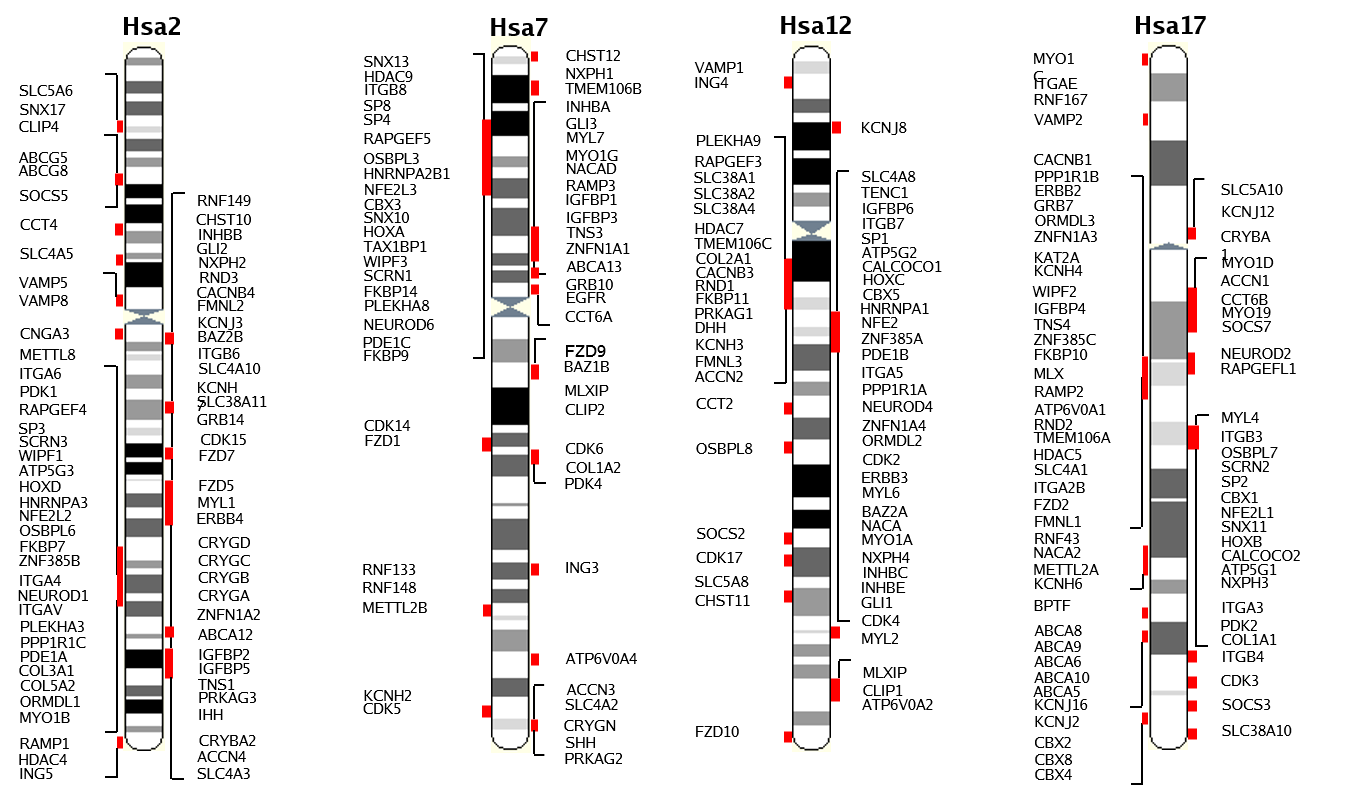Synteny of HOX Paralogon
The conservation of gene synteny on different chromosomal region entails the functional significance. For instance, the co-expression of neighboring genes is mediated by high order structural organization of chromosomes, which brings together the far off genomic regions in close proximity in order to be expressed together in a coordinated manner (Parveen et al., 2013). Similarly, the gene regulatory elements spread across long regions impose critical constraint on genomic architecture and are known to have maintained exceptionally long syntenic blocks both within and across species (Meaburn and Misteli 2007).
To elucidate the evolutionary mechanism that shaped the quadruplicated/ triplicated synteny on human HOX bearing paralogon, rigorous (manually curated) screening of human chromosomes 2, 7, 12 and 17 was performed. This screening identified total 62 human multigene families (362 genes) with at least three fold representations on these four chromosomes. Schematic synteny map of these 62 families was manually sketched to depict their relative positioning on respective chromosomal locations. It is of note that the subset of these families also have representatives on human non HOX bearing chromosomes (Abbasi 2010; Abbasi and Grzeschik 2007; Asrar et al., 2013; Ambreen et al., 2014). Data for such non HOX residing members is presented in table and included in the phylogenetic analysis but such members were not mapped on synteny diagrams (Figure 1).

Figure 1: Gene families with members on at least three of the human HOX-bearing chromosomes 2, 7, 12, and 17.
Useful references: